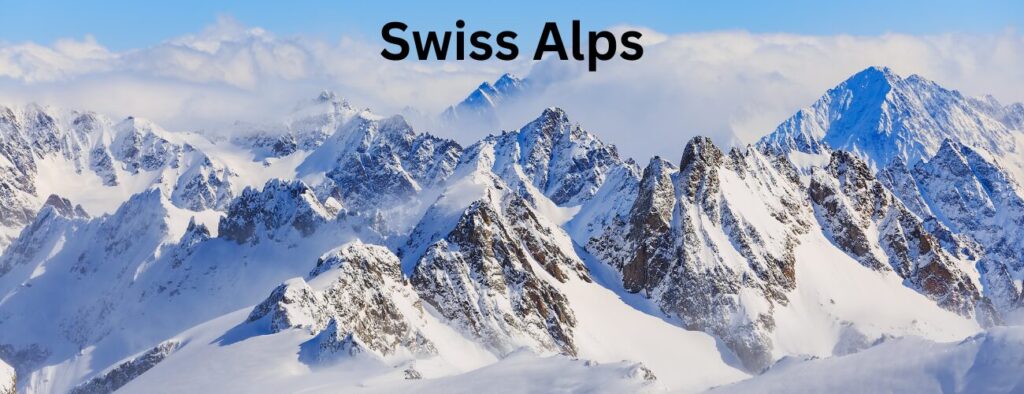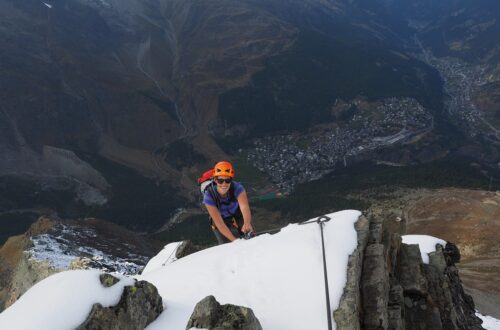Pinut Via Ferrata: Switzerland’s Oldest Climbing Adventure
High above the stunning resort town of Flims in the canton of Graubünden, the Pinut Via Ferrata offers a quick and easy way to see the raw beauty of the Swiss Alps. Known as the oldest via ferrata in Switzerland, Pinut has been in use in one form or another since the 18th century, making it not just a physical challenge, but a journey through alpine history.
This route isn’t the toughest in the country, but what it lacks in technical difficulty, it makes up for in stunning views, fascinating geology, and a thrilling climb along exposed cliff faces. Whether you’re new to via ferrata or just looking for a scenic half-day adventure, Pinut is one of the best entry-level routes in Switzerland.

Location and Getting There
The Pinut Via Ferrata is located above the town of Flims, near Laax in southeastern Switzerland. The region is well-known for its outdoor sports, including skiing, hiking, and mountain biking. It’s easily reachable by train and bus from Chur, Zurich, or Lucerne, and there’s handy parking in Flims for those arriving by car.
From Flims, you’ll hike for about 45–60 minutes through scenic meadows and pine forests to reach the starting point at Bargis, a remote alpine valley that serves as the gateway to the via ferrata.

Route Overview
- Difficulty: Easy to Moderate (K2)
- Length: ~2.5 km of climbing
- Elevation Gain: Approx. 700 meters
- Time Required: 3 to 4 hours (including hike out)
- Best Season: June to October
Pinut is a perfect introduction to via ferrata climbing, with a fairly low difficulty rating and plenty of safety features. The route includes metal rungs, wooden staircases, suspension walkways, and a long vertical ladder system, all securely bolted into the rock. It’s a popular choice for families with teens, school groups, and first-time climbers.
It is beginner-friendly but the exposure is real. Some sections are built into sheer limestone cliffs, and while you’re clipped into a safety cable the entire way, you’re often walking with several hundred meters of empty space below your feet—thrilling but safe.
Click here for a selection of awesome European adventures.
The Climb in Detail
Section 1: The Approach and Warm-up
The climb begins gently. After hiking from Flims to Bargis, you’ll reach a clear sign marking the start of the via ferrata. The route initially follows a series of wooden staircases and gentle traverses that serve as an ideal warm-up. This early part also includes some interesting interpretive panels that describe the history of the route and the natural environment around you.
As you go higher, the views get better—first over Flims, and then over the stunning Flimserstein cliffs and surrounding valleys.
Section 2: The Historic Cliffs and Caves
Midway through the route, you’ll climb into an old section of the via ferrata that dates back to the 1700s. Wooden ladders and stone footholds, once used by shepherds and traders, have been reinforced with modern safety gear. One of the highlights is a narrow limestone tunnel, carved into the cliff, that you pass through with the help of installed cables and rungs.
This section feels like a mix between a historic hike and a climbing challenge, and it’s a fascinating reminder that via ferratas were originally functional mountain routes, not just recreational trails.
The Descent
From the top of the via ferrata, a well-marked hiking trail takes you back down to Flims. The descent takes about 1.5 to 2 hours and passes through alpine pastures and quiet forest paths, making for a relaxing return journey after the climb.
What to Bring
While Pinut is considered one of the easier via ferratas in Switzerland, it’s still a mountain adventure and requires the right gear:
- Helmet: Essential to protect from falling rocks or bumps.
- Climbing harness and via ferrata lanyard set: Includes carabiners and an energy-absorbing system.
- Sturdy hiking or climbing boots: With good ankle support and grip.
- Gloves: To protect your hands on the steel cables and rungs.
- Water and snacks: Especially in warmer months.
- Layered clothing: Weather in the Alps can change rapidly.
Note: Gear can be rented at shops in Flims, and several guided tours are available for those new to via ferratas.
Safety Tips
- Don’t climb in wet or stormy conditions. The route becomes slippery and dangerous.
- Check the cable system as you go to make sure it’s secure.
- Always clip in with both carabiners.
- Start early to avoid afternoon storms and to give yourself enough time to descend in daylight.
Make a Day of It
One of the best things about the Pinut Via Ferrata is that it’s located near a host of other attractions. After your climb, reward yourself with a traditional alpine lunch in Flims or visit the nearby Lake Cauma (Caumasee). It is a crystal-clear, turquoise mountain lake ideal for swimming, relaxing, or paddle boating.
Or, take a short drive to Laax, one of Switzerland’s premier mountain resorts, or explore the Rhine Gorge, an impressive canyon carved by glacial meltwaters—also accessible by bike or foot.
Why Choose the Pinut Via Ferrata?
Perfect for Beginners: A safe, well-maintained route that’s ideal for first-time climbers.
Historically Significant: The oldest via ferrata in Switzerland, with unique features and heritage.
Incredible Scenery: From high cliffs to alpine meadows, the views are unforgettable.
Accessible Location: Just a short hike from Flims, and easy to reach by public transport.
Family-Friendly Adventure: A great introduction to alpine sports for older children and teens.
Final Thoughts
The Pinut Via Ferrata is the kind of experience that turns mountain wanderers into mountain lovers. It’s safe, scenic, and rich in history. The route is an ideal adventure for those just starting out or for anyone looking to reconnect with the raw beauty of the Swiss Alps without needing expert climbing skills.
Climb the ladders of history and feel the thrill of exposed ledges. Gaze out over some of Switzerland’s most beautiful landscapes—it’s all waiting for you on the cliffs of Pinut.


